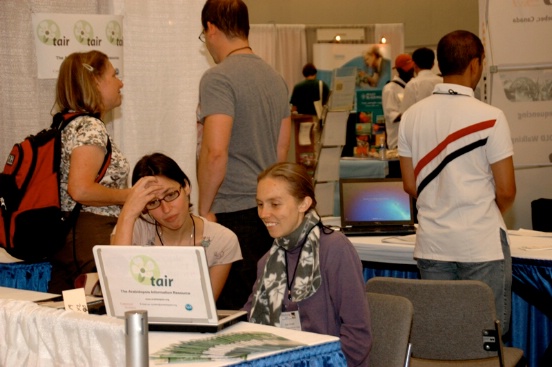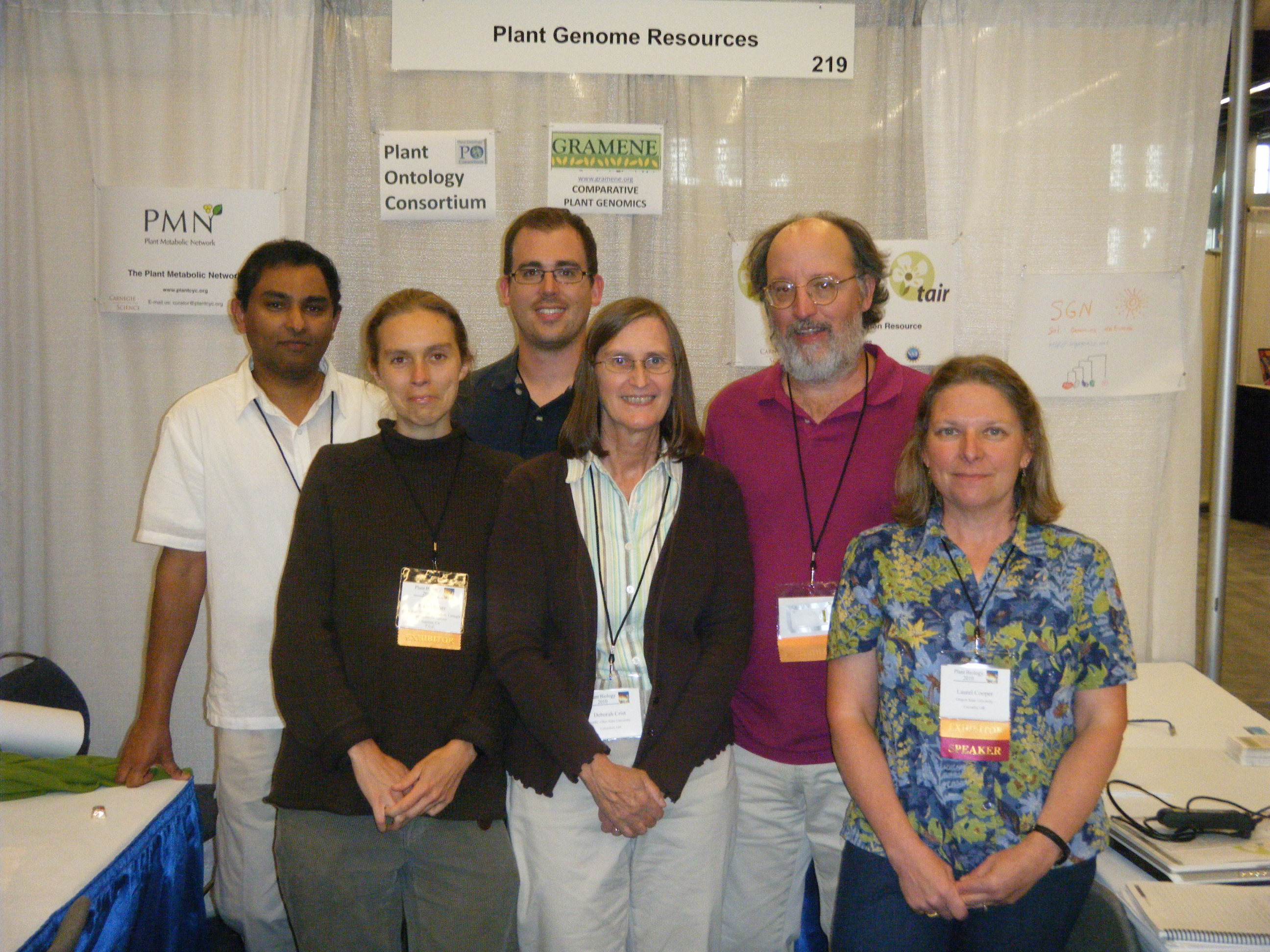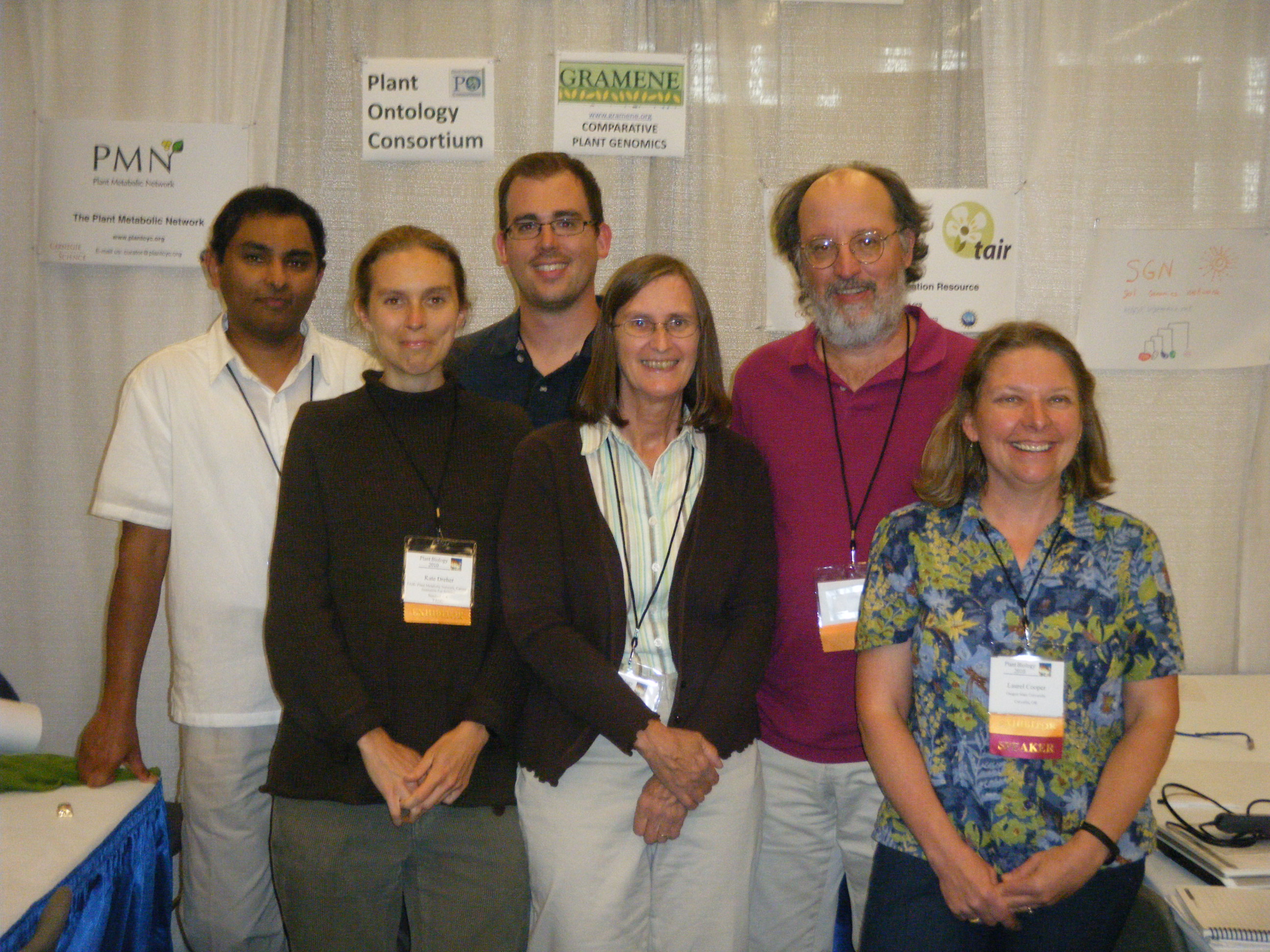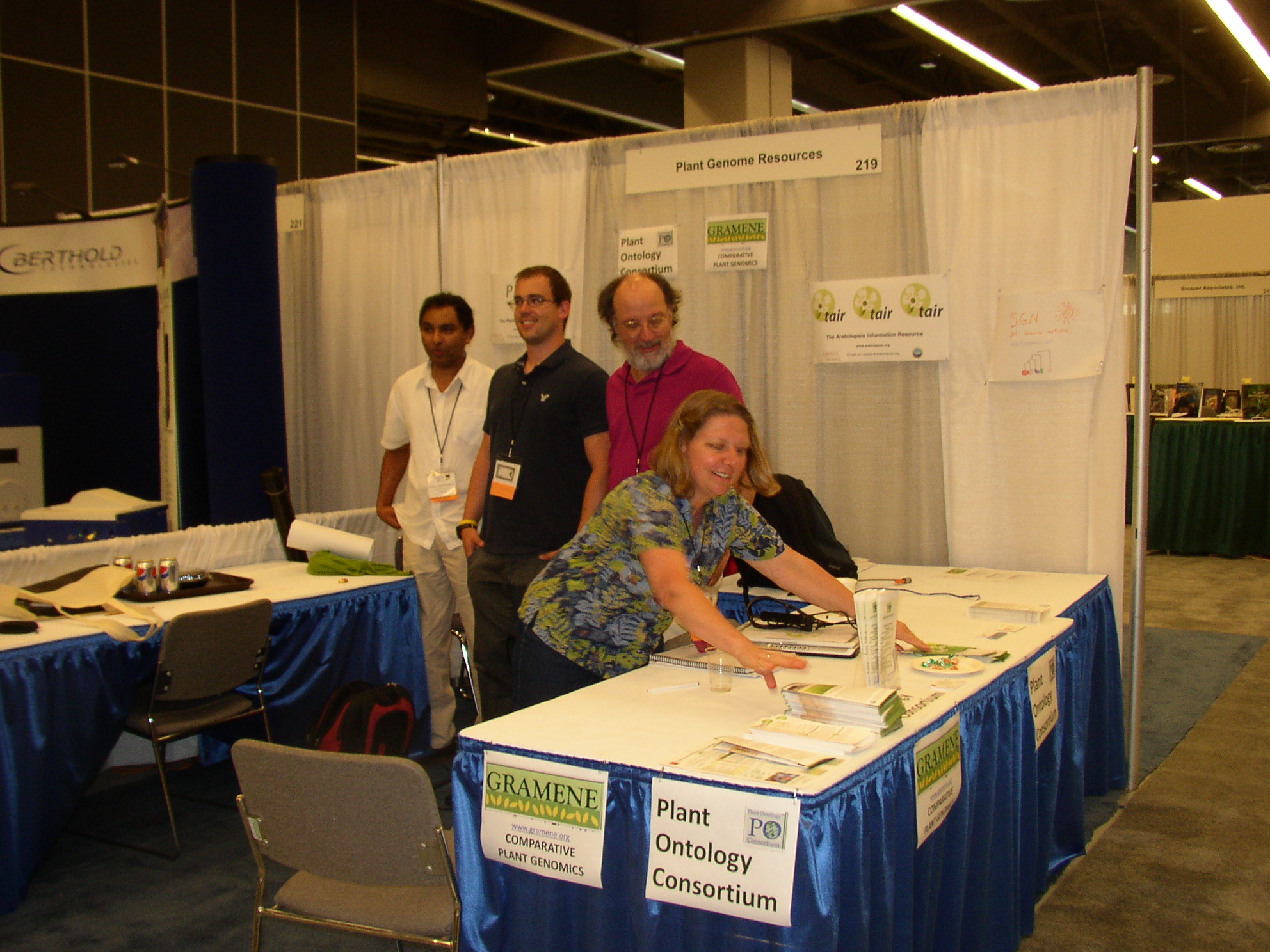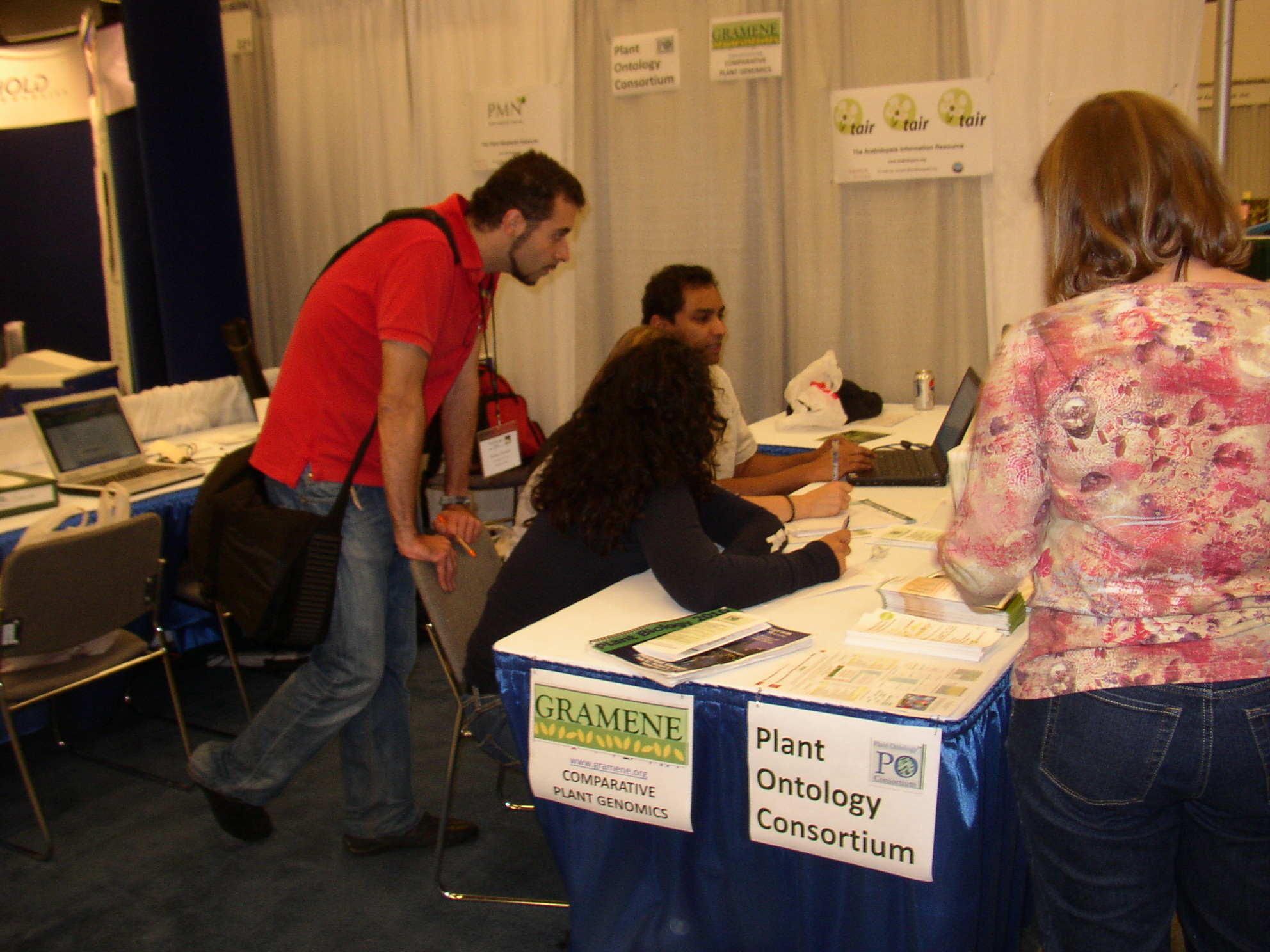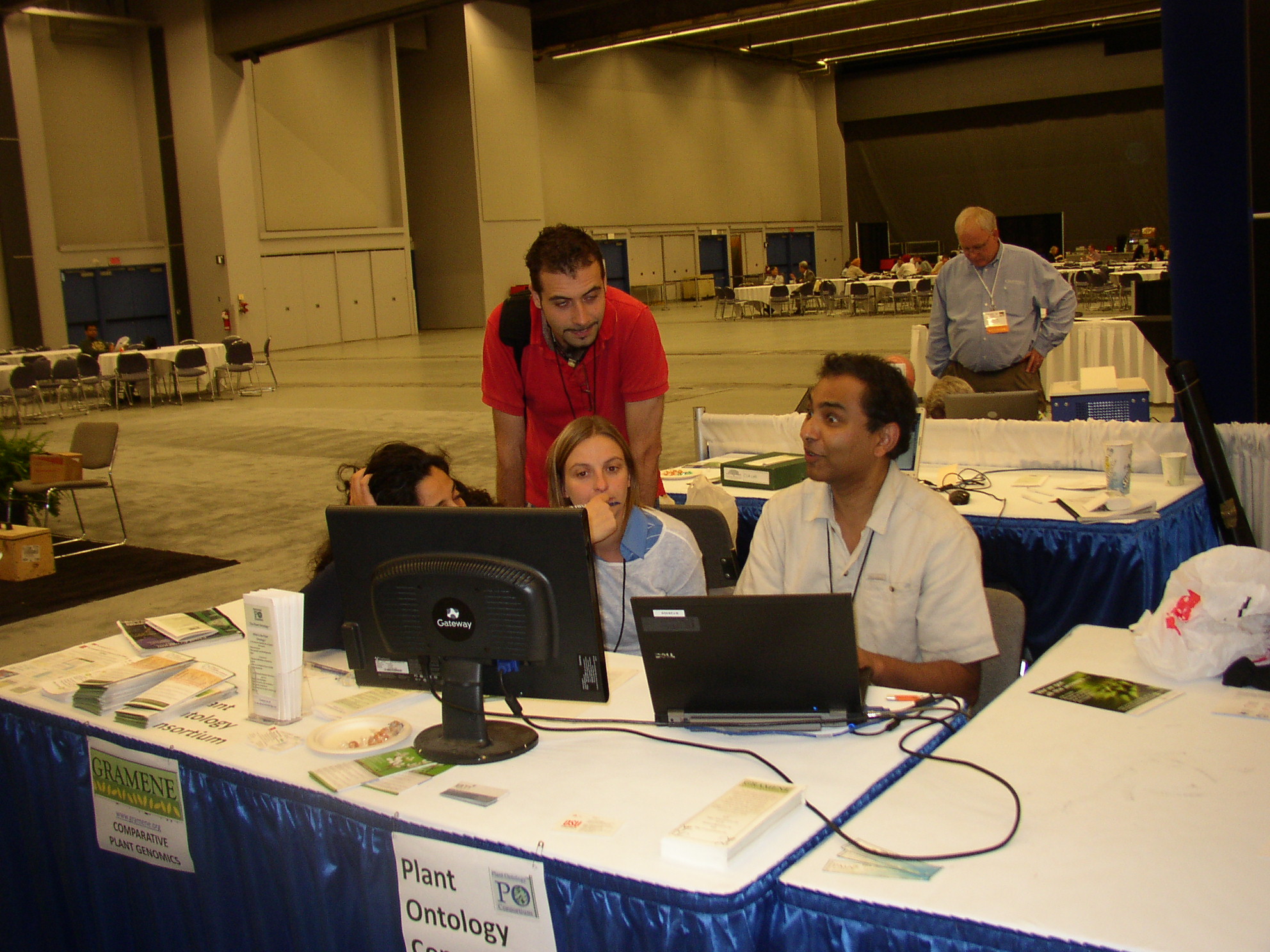Plant Genome Resources Outreach Booth
Visit a collection of plant genomics databases and projects with resources for sequenced genomes, ontology development, genetic mapping, functional annotation of genes, mutants and phenotypes, genetic diversity and bioinformatics tools. Representatives from the projects will be present to demonstrate tools for cutting-edge genomics and genetics research and to answer questions.
Projects Represented at the Booth:
Plant Ontology Consortium
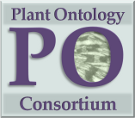 See our web page for more information: http://www.plantontology.org
See our web page for more information: http://www.plantontology.org
The main objective of the Plant Ontology Consortium (POC) is to develop, curate and share controlled vocabularies (ontologies) that describe plant structures and growth and developmental stages, providing a semantic framework for meaningful cross-species queries across databases. The Plant Ontology (PO) has been developed and maintained with the primary goal to facilitate and accommodate functional annotation efforts in plant databases and by the plant research community at large. As a part of the POC project, participating databases such as TAIR, NASC, Gramene and MaizeGDB have been using PO to describe expression patterns of genes and phenotypes of mutants and natural variants.
Come see Poster # P14010: The Plant Ontology: A Database for Plant Genomics
Plan to attend the Plant Ontology and Gramene Gene Annotation Workshop Saturday, July 31st, 8 am-12 pm, (pre-registration required)
Gramene
 http://www.gramene.org/plant_ontology/
http://www.gramene.org/plant_ontology/
The Gramene database (www.gramene.org) is a comparative plant genomics platform. The database allows researchers to carryout online data analysis, hypothetical modeling or confirmation of lab based findings using both forward and reverse genetics approaches to find genes, proteins, phenotypes (mutants and QTLs), function(s), gene-gene interaction(s), metabolic pathways and polymorphisms in a genomic region of interest. It also allows researchers to make comparisons across genetic maps, genomes, genes and gene families and provides a mechanism to find candidate genes associated with phenotype and/or functional characteristics by way of whole genome alignments and synteny views.**
Gramene Poster links: Gramene: Your Resource for Comparative Plant Genomics
Pathway Networks for Cereals and Their Applications
Plan to attend the Plant Ontology and Gramene Gene Annotation Workshop
Saturday, July 31st, 8 am-12 pm, (pre-registration required)
Solanaceae Genomics Network
The SOL Genomics Network is a Clade Oriented Database (COD) containing genomic, genetic, phenotypic and taxonomic information for species in the Euasterid clade, including the families Solanaceae (e.g. tomato, potato, eggplant, pepper, petunia) and Rubiaceae (coffee). Genomic information is presented in a comparative format and tied to other important plant model species such as Arabidopsis. SGN is also one of the bioinformatics centers involved in tomato genome sequencing.
One of the major efforts at SGN is linking Solanaceae phenotype information with the underlying genes, and subsequently the genome. As part of this goal, SGN puts the control over the information in the hands of community experts. As a result, SGN annotations are more up-to-date, and richer with detailed descriptions and gene-to-phenotype cross links, than would otherwise be possible without a large curatorial staff
Maize Genetics and Genomics Database
MaizeGDB is a community database designed to disseminate biological information on the important crop plant, Zea mays ssp. mays to a user community that is as diverse as maize itself.
A variety of datatypes are served through MaizeGDB including genetic, genomic, DNA sequence, gene product, functional characterization, and literature resources.
Accordingly, MaizeGDB is serving as the long-term home of the recently completed maize genome sequence through the MaizeGDB Genome Browser.
In addition, MaizeGDB provides community support services including: person/organization contact information, coordination of annual meetings, conducting elections and surveys, and dissemination of the annual Maize Newsletter.
Challenges to be met in the immediate future include: development of tools and capacities to handle large datasets from Next Generation DNA sequencing, expansion of mutant and phenotype datasets, expansion of structural and genetic maps, and providing access to gene models developed by gene structure prediction groups.
The Arabidopsis Information Resource-TAIR
The Arabidopsis Information Resource (TAIR) maintains a database of genetic and molecular biology data for the model higher plant Arabidopsis thaliana . Data available from TAIR includes the complete genome sequence along with information concerning gene structures, gene product functions, metabolism, gene expression, DNA and seed stocks, genome maps, genetic and physical markers, publications, useful tools, and members of the Arabidopsis research community. Gene product function data is updated every two weeks from the latest published research literature and community data submissions. Gene structures are updated 1-2 times per year using computational and manual methods as well as community submissions of new and updated genes. TAIR also provides extensive links from our data pages to other Arabidopsis resources.
- A joint workshop with SGN will take place on Monday August 2nd at 8:00 PM in room 512 c,d,g,h.
- Information on AraCyc, the plant metabolic pathway database connected to TAIR, will be presented on Sunday August 1, at 7:30 PM in room 512 c,d,g,h
Please come visit our Poster # P14022 entitled ‘TAIR: bringing together data for the global plant biology community’:
The Bio-Array Resource for Plant Functional Genomics
The Bio-Array Resource at the University of Toronto is a collection of web-based tools for exploring, visualizing and mining large-scale data sets, primarily from Arabidopsis thaliana but also from several other plant species.
These tools include:
eFP Browser (electronic Fluorescent Pictograph Browser) for painting gene expression and other information onto diagrammatic representations of the particular experimental series from which the data were generated. An Arabidopsis, Poplar, Medicago truncatula, Rice, Barley, and Cell eFP Browser are available.
Expression Angler for identifying co-expressed, anti-correlated, or condition/tissue-specific genes using the "custom bait feature" in 5 of the gene expression data sets from the AtGenExpress Consortium, from our in-house database or from NASCArrays, or several other data sets.
Expression Browser for performing electronic northerns.
Arabidopsis Interactions Viewer for querying a database of almost 80,000 predicted and 2,800 documented protein-protein interactions in Arabidopsis.
Promomer for identifying over-represented n-mer words in the promoter of a gene of interest, or in promoters of co-expressed genes.
And several other useful tools!
Visit this poster for more information as well: Orthologous Gene Identification of Plant Species




